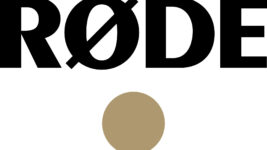News
11 Dec 2024
Sennheiser launches Spectera Pioneer Program

Subscribe to CX E-News
Following the unveiling of Spectera at IBC, and numerous showcases of the solution at various international tradeshows since, Sennheiser takes the first step for market introduction with the Spectera Pioneer Program. The program gives selected customers from live audio and broadcasting the opportunity to experience the new technology in their daily work.
“Spectera is an ever-evolving ecosystem that will continuously be fine-tuned and shaped by input from our end users,” explains Dr Andreas Sennheiser, co-CEO. “The Pioneer Program is a testament to this ambition. While operators can familiarise themselves with the new, user-friendly workflows enabled by Spectera, we are engaging in a dialogue to collect valuable insights to further shape the ecosystem regarding devices, performance and features.”
The first round of participants in the program have already received Spectera systems, and Sennheiser’s Technical Application Engineering (TAE) team has provided them with hands-on training. Now, the participants are free to put the system through its paces and employ it as they like.
“This will provide us with feedback on how Spectera can be further adapted to the day-to-day workflows of our users,” says Theresa Vondran, Pro Category Market Manager, who co-heads the Pioneer Program. “We are eager to understand how diverse customers are employing the new WMAS technology, and implement usage scenarios and ideas into our future release plan. Our R&D teams can’t wait to get this additional input to evolve Spectera beyond general availability in 2025.”

Participants in the Pioneer Program have received a Spectera Base Station with the respective RF license, up to 24 SEK bidirectional bodypacks, eight DAD intelligent transceiving antennas, MADI cards, and LinkDesk software. They get immediate on-site and remote support from the TAE team and have access to a protected website with a wide range of training materials, user documentation, release notes, and a download area for the latest firmware and LinkDesk versions. A Discord Channel has been set up to allow for instant feedback, bug reporting, Q&A, and community discussions.
“With the Pioneer Program community, we are embarking on a joint journey with our customers, integrating their feedback into the Spectera ecosystem, and allowing us to create added value for them,” says Andreas Sennheiser. “Our customers will see many more of such direct feedback opportunities in future. We are very much looking forward to creating the future of audio together.”
Audio Link Modes
Also, the company has revealed further details about Spectera, in particular regarding the various Audio Link Modes the bidirectional bodypacks can operate on. These modes apply to mics, IEMs or both mics and IEMs, and vary in the latency, range, number of audio links, audio quality (codec used) and battery runtime they provide. The modes can be chosen individually per device, and differently for the mic and the IEM on any given SEK bodypack.
“These modes are one of the aspects we have in mind when we speak about the new workflows that Spectera enables,” says Bernd Neubauer, Spectera Product Manager. “While narrowband systems give you a largely fixed set of parameters, with, for example, only a limited choice between two codecs and two channel counts, or two or three settings for transmission power, Spectera finally lets the operator select the parameters as required by the specific application or the situation on site. The RF spectrum can always be optimally exploited.”

Neubauer adds an example: “If I am pressed for spectrum space at a festival, I would choose my Audio Link Modes such that they maximise the number of channels that can be transmitted in an RF carrier, while still keeping latency at an acceptable level. If I can be more generous with spectrum resources, Spectera offers some truly spectacular modes, where the latency is just 0.7 ms for an IEM or 1.0 ms for a mic. The same scaling can be done for range – is my band performing on a main stage only, or is there a catwalk and a B-stage planned and I need to go for longer range?”
Overview of completed regulatory approvals
Andreas Wilzeck, Head of Spectrum Policy and Standards, gives an overview of where the regulatory approvals for WMAS technology stand: “In EMEA, the regulatory approval of WMAS is effective in the EU-27 countries, in the UK, Switzerland, Norway, Greenland, Qatar, UAE, South Africa, Rwanda, Kenya, Nigeria, and Israel. In the Americas, WMAS ruling has been granted in the USA and Canada, and in APAC, the regulatory authorities in Australia (for indoor use), Singapore, Malaysia, Philippines, Indonesia, Bhutan, Taiwan and Hong Kong have approved WMAS technology. Product certification is already completed or on its way.”
“Our spectrum team is working closely with our local colleagues to achieve rule changes in some additional countries in APAC, Africa and Latin America. Beyond that, we are investigating statuses and possibilities in many other countries globally.”
Subscribe
Published monthly since 1991, our famous AV industry magazine is free for download or pay for print. Subscribers also receive CX News, our free weekly email with the latest industry news and jobs.






